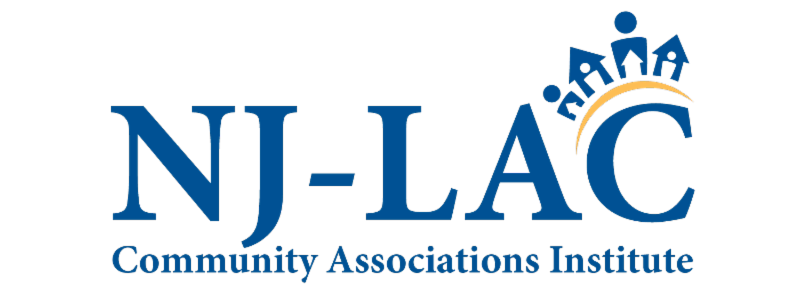
Board Member Duties
Fiduciary Duty. Board members have a fiduciary duty to the Association. The “business judgment rule” is the standard by which board action is measured. So long as the board members fulfill their duties of “care” and “loyalty” and their decisions are not patently unreasonable, their decisions will typically not be second-guessed by a court.
“Care” obligates the board to make their decisions only after “due diligence” – after the board members have become reasonably informed about the issue at hand. The board members may rely on experts such as engineers, architects, lawyers, accountants, contractors, etc. in fulfilling their duty of care.
“Loyalty” obligates the board to make their decisions for the benefit of the Association rather than for their own benefit.
Confidentiality: Board members are necessarily given access to otherwise confidential information. Examples of confidential information are Members’ financial information, Members’ health status, certain employee information, requests for proposals and bids, attorney-client communications and communications regarding litigation even if the communications are not with the Association’s attorneys. Confidential information must be kept confidential even if the Board member did not sign a confidentiality agreement. Board members should be particularly cautious when using e-mail, text messages and computers as no one other than the Board member should have access to confidential information. Breaching confidentiality exposes the Association to, among other things, business losses and suit.
Board Member Protection
Indemnification, Exculpation, Trustees and Officers Liability Insurance.
Board members should confirm that the Association’s governing documents contain provisions indemnifying, defending and holding them harmless in case of a claim against them arising out of their board service. Board members should also confirm that the Association has appropriate Officers Liability Insurance and that the carrier is immediately notified of any threat against them or the Association. Insurance carriers deny coverage if they are not timely notified of a threat.
Meetings
There are two basic Association meeting types: 1) Board meetings and 2) Membership meetings.
I.) BOARD MEETINGS are where the Board Members act by voting.
A.) Workshop Board meetings are where the Board makes no decisions. They are essentially informational meetings. The Members do not attend, and no minutes are taken.
B.) Executive Session Board meetings are where binding decisions are made on the following limited matters, but the Members are not permitted to attend:
(a) Matters the disclosure of which would constitute and unwarranted invasion of individual privacy. Ex: decisions on debtor accounts, handicapped accommodations etc.; (b) Pending or anticipated litigation or contract negotiation; (c) Matters falling within the attorney-client privilege; (d) Matters involving employee promotion, discipline or dismissal. Members do not attend but minutes are taken.
C.) Open Board meetings are meetings where the Members are notified of the meeting, Members may attend, watch and, in most cases, can make comments. Except for decisions on the limited topics noted in subsection B., Board Members are required to make all their binding decisions at open board meetings. Minutes are taken. Members do not participate in the decisions.
II.) MEMBERSHIP MEETINGS are where the Members act by voting. Membership meetings are rare. Examples are:
A) The Annual Membership Meeting where the membership acts to elect trustees. Minutes are taken.
B) Special Membership Meetings where, depending on the Association’s governing documents, the Members may be required to act to remove a board member, amend the Governing Documents, authorize a special assessment etc. Minutes are taken.
How Member Concerns Get to the Board Table.
Via the Manager or Via Open Board Meeting Member Comment
Member concerns are to be directed to the Association’s Manager via in-person or e-mail communication. Member concerns may also be directed to the Board during the Member comment portion of the Board’s open board meetings.
Via the Manager
If a concern or question is brought to Management’s attention, the Manager will bring it to the Board’s attention during the Board’s workshop meeting. Not all questions and concerns require formal Board consideration. For example, some issues may be immediately addressed by Management. If the Board determines that formal Board consideration is necessary, the Board will direct management to place the issue on the agenda for one of the Board’s forthcoming Board meetings.
Via Open Board Meeting Member Comment
If a concern or question is brought to the Board’s attention at an open Board meeting, the Board will take note of the concern or question and, if the Board determines that formal Board consideration is necessary, the Board will direct management to place the issue on the agenda for one of the Board’s forthcoming Board meetings. The Board may however address concerns or questions at the same meeting where they are raised in its discretion.
Board Consideration
Once a concern or question is on the Open Board Meeting agenda, a Board member places it on the table for consideration by moving to, for example, “consider the Member’s request to have a ping pong table placed in the library”.
Motion Dies on the Table
If no one seconds the Board member’s motion, the topic dies there and is generally not subject to further discussion.
Second, Board Discussion and Vote
If another Board member seconds the motion, the Chair will call for discussion between and among the Board members only. At the Chair’s discretion, the Board may also entertain comments from the Members but only on the motion. Once the Board Members have concluded their discussion, the Chair will close discussion and call for a Board Member vote. The motion and vote will be recorded in the minutes and the matter is closed.
The Board may always “table” an issue for future consideration. The Board may also refuse to formally entertain a concern or question. The most common reason a Board refuses to formally entertain a concern or question is that the concern or question was previously disposed of by the Board.
Transition:
Evaluate, Communicate & Negotiate but…should we litigate?
“Transition” is the due diligence process required by the board members’ fiduciary duty. In sum, the homeowner-elected board members must determine if the sponsor did what it was supposed to do and, if not, take action to get the deficiencies corrected. Upon assuming board control homeowner-elected board members must:
1) evaluate the association’s physical and financial condition;
2) communicate the findings to the members and the sponsor;
3) negotiate for repairs, money or a combination of repairs and money.
Evaluate. Due diligence begins with evaluating the association’s physical and financial conditions. These evaluations must be undertaken promptly. Delay may result in losing some or all claims due to expiration of warranties, statutes of limitation and/or the statute of repose.
Engineers, architects, accountants and other experts are enlisted by the board and the association’s attorney to ferret out deficiencies and “connect the dots”. “Connecting the dots” requires experts to:
1) Identify the duty – statutes, architectural drawings and specifications, building codes, industry standards, manufacturer’s specifications, etc.
2) Specify how the duty was breached – for example, required building wrap was not installed;
3) Specify the damage – for example, moisture got behind the siding and was not shed down and out; instead the moisture damaged the substrate and structural members;
4) Specify how the breach caused the damage – for example, if the required building wrap had been properly installed, water that got behind the siding would have been shed down and out of the building envelope without damage to the substrate and structural members. Instead, the water was absorbed by the substrate and structural members resulting in rot and mold growth.
After “connecting the dots”, the association’s experts should carefully determine how much it will cost the association to fix the various physical and financial defects. This “cost to cure” report provides the board with a basis for prioritizing the deficiencies and evaluating how much the association should spend on attempting to compel the sponsor and others to remedy deficiencies.
Without reputable experts solidly connecting the dots and determining the cost to cure, the association has little prospect of transition success.
Assuming the experts connect the dots and accurately estimate the cost to cure, the board, its experts and counsel must finally evaluate the probability of recovery. Is there an individual or entity that has the resources to cure the deficiencies or pay the association so that it may cure the deficiencies. Is it the sponsor? Is it the sub-contractors? Is it one or more insurance companies? Typically transition is resolved with contributions by all of these but, if there is little or no prospect of recovery, the association should carefully consider other options such as self-funding repairs, obtaining a bank loan to fund repairs or phasing repairs over time while using “Band-Aid” fixes in the meantime.
Communicate. Many boards are reluctant to communicate expert findings to the membership. This is a mistake. Everyone hopes that the transition process will be smooth and amicable. However, transition can be long, contentious and expensive. If the membership does not support the board, management, its attorneys and experts, half of the battle is already lost. The board must share as much information as possible with the membership during the transition process so that the members know what it going on, know why various items have not yet been fixed and know why it is important for the association to spend the time and money to see the transition process through to resolution.
Negotiate. Once the board has a comfort level with the experts’ findings and recommendations, the board and counsel will negotiate with the sponsor, developer, sub-contractors and others. In most cases this negotiation results in an amicable transition agreement whereby the sponsor and other responsible entities make repairs and/or pay the association so that it may make the repairs. In exchange, the association gives the responsible entities a release and hopefully everyone lives happily ever after.
But…should we litigate? If there is no amicable resolution, should the association litigate? This is a big decision and the “cost to cure” and “viability of recovery” evaluations become that much more important. There are many times where a litigated transition is necessary. The board should not shrink from turning to the courts on behalf of itself and its members. But, before doing so, a cost-benefit analysis must be carefully considered.
If the cost to cure and probability of recovery outweigh anticipated expert fees, attorney fees and other expenses, litigation likely makes sense but if the board finds that it is more economical, certain and timely to merely fix the deficiencies itself, it may do so and sign no release. In any case, transition releases should not be signed in exchange for nominal or no consideration.














